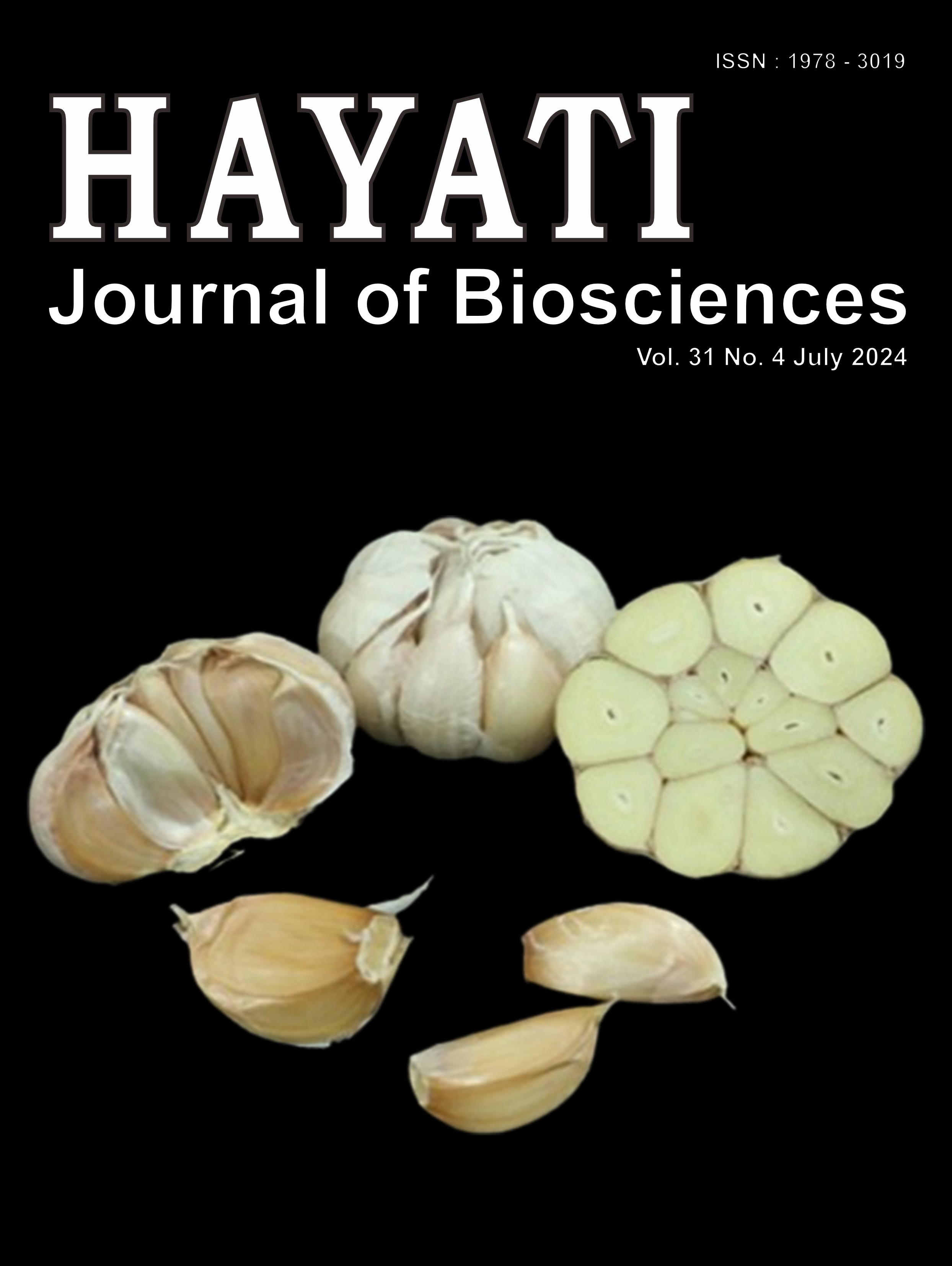Exploring Indonesian Sponge-Associated Marine Aspergillus hortai: Characterization of Bioactive Compounds with Potential Anti-Escherichia coli Properties
Abstract
Sponge-associated marine fungi are potential source for secondary metabolite compounds. The aim of this research was to investigate sponge-associated marine fungus as secondary metabolite producers against Escherichia coli. The fungus was isolated from Indonesian marine sponge Stylissa sp. and identified as Aspergillus hortai through a combination of morphological and molecular characteristics of ITS DNA and β-tubulin genes. The fungus was tested against E. coli using fungal broth and mycelial extracts. The optimized condition was achieved by fungal broth grown in corn meal broth at 6-days of shaking incubation. Fungal extract was produced using three liters of filtered fungal broth and extracted in ethyl acetate. The antibiotic activity of the extract is vulnerable to 45°C heat and basic or acidic conditions. Therefore, the extraction was done at pH 7 with evaporation at 40°C. The extract shows 7 major bands on TLC with 1 band shows activity against E. coli (Rf 0.81) on bioautogram. The band was observed as a yellow color and turned black in short-wave UV and did not show any fluorescence in long-wave UV. This research shows that sponge-associated marine fungi obtained from Indonesia has the potential as anti E. coli worth to be explored for searching new antibiotics.
Downloads
Copyright (c) 2024 Wendi Nurul Fadillah, Nampiah Sukarno, Dyah Iswantini, Min Rahminiwati, Christopher MM Franco, Wei Zhang, Novriyandi Hanif, Mashuri Waite

This work is licensed under a Creative Commons Attribution-NonCommercial 4.0 International License.
HAYATI J Biosci is an open access journal and the article's license is CC-BY-NC. This license lets others distribute, remix, tweak, and build upon author's work, as long as they credit the original creation. Authors retain copyright and grant the journal/publisher non exclusive publishing rights with the work simultaneously licensed under a https://creativecommons.org/


















.png) IPB University
IPB University Department of Biology
Department of Biology The Indonesian Biological Society
The Indonesian Biological Society 

